1. Søreide K, Hallet J, Matthews JB, Schnitzbauer AA, Line PD, Lai PB, et al. Immediate and long-term impact of the COVID-19 pandemic on delivery of surgical services. Br J Surg. 2020; 107(10):1250–1261. PMID:
32350857.

2. Huntley BJ, Huntley ES, Di Mascio D, Chen T, Berghella V, Chauhan SP. Rates of maternal and perinatal mortality and vertical transmission in pregnancies complicated by severe acute respiratory syndrome coronavirus 2 (SARS-Co-V-2) infection: a systematic review. Obstet Gynecol. 2020; 136(2):303–312. PMID:
32516273.

3. Allotey J, Stallings E, Bonet M, Yap M, Chatterjee S, Kew T, et al. Clinical manifestations, risk factors, and maternal and perinatal outcomes of coronavirus disease 2019 in pregnancy: living systematic review and meta-analysis. BMJ. 2020; 370:m3320. PMID:
32873575.

4. Vallejo V, Ilagan JG. A postpartum death due to coronavirus disease 2019 (COVID-19) in the United States. Obstet Gynecol. 2020; 136(1):52–55. PMID:
32384387.

5. Blauvelt CA, Chiu C, Donovan AL, Prahl M, Shimotake TK, George RB, et al. Acute respiratory distress syndrome in a preterm pregnant patient with coronavirus disease 2019 (COVID-19). Obstet Gynecol. 2020; 136(1):46–51. PMID:
32384385.

6. Mattar CN, Kalimuddin S, Sadarangani SP, Tagore S, Thain S, Thoon KC, et al. Pregnancy outcomes in COVID-19: a prospective cohort study in Singapore. Ann Acad Med Singapore. 2020; 49(11):857–869. PMID:
33381779.

7. Poon LC, Yang H, Kapur A, Melamed N, Dao B, Divakar H, et al. Global interim guidance on coronavirus disease 2019 (COVID-19) during pregnancy and puerperium from FIGO and allied partners: Information for healthcare professionals. Int J Gynaecol Obstet. 2020; 149(3):273–286. PMID:
32248521.

8. Siston AM, Rasmussen SA, Honein MA, Fry AM, Seib K, Callaghan WM, et al. Pandemic 2009 influenza A(H1N1) virus illness among pregnant women in the United States. JAMA. 2010; 303(15):1517–1525. PMID:
20407061.

9. Remaeus K, Savchenko J, Brismar Wendel S, Brusell Gidlöf S, Graner S, Jones E, et al. Characteristics and short-term obstetric outcomes in a case series of 67 women test-positive for SARS-CoV-2 in Stockholm, Sweden. Acta Obstet Gynecol Scand. 2020; 99(12):1626–1631. PMID:
32981033.

10. Chen H, Guo J, Wang C, Luo F, Yu X, Zhang W, et al. Clinical characteristics and intrauterine vertical transmission potential of COVID-19 infection in nine pregnant women: a retrospective review of medical records. Lancet. 2020; 395(10226):809–815. PMID:
32151335.

11. Zambrano LD, Ellington S, Strid P, Galang RR, Oduyebo T, Tong VT, et al. Update: characteristics of symptomatic women of reproductive age with laboratory-confirmed SARS-CoV-2 infection by pregnancy status - United States, January 22–October 3, 2020. MMWR Morb Mortal Wkly Rep. 2020; 69(44):1641–1647. PMID:
33151921.
12. Hirshberg A, Kern-Goldberger AR, Levine LD, Pierce-Williams R, Short WR, Parry S, et al. Care of critically ill pregnant patients with coronavirus disease 2019: a case series. Am J Obstet Gynecol. 2020; 223(2):286–290. PMID:
32371056.

13. Oakes MC, Kernberg AS, Carter EB, Foeller ME, Palanisamy A, Raghuraman N, et al. Pregnancy as a risk factor for severe coronavirus disease 2019 using standardized clinical criteria. Am J Obstet Gynecol MFM. 2021; 3(3):100319. PMID:
33493707.

15. Lei H, Xu X, Xiao S, Wu X, Shu Y.. Household transmission of COVID-19-a systematic review and meta-analysis. J Infect. 2020; 81(6):979–997.

16. Fajgenbaum DC, June CH. Cytokine storm. N Engl J Med. 2020; 383(23):2255–2273. PMID:
33264547.

17. Tanacan A, Yazihan N, Erol SA, Anuk AT, Yucel Yetiskin FD, Biriken D, et al. The impact of COVID-19 infection on the cytokine profile of pregnant women: a prospective case-control study. Cytokine. 2021; 140:155431. PMID:
33503581.

18. Saad AF, Chappell L, Saade GR, Pacheco LD. Corticosteroids in the management of pregnant patients with coronavirus disease (COVID-19). Obstet Gynecol. 2020; 136(4):823–826. PMID:
32769659.

19. Cao W, Liu X, Hong K, Ma Z, Zhang Y, Lin L, et al. High-dose intravenous immunoglobulin in severe coronavirus disease 2019: a multicenter retrospective study in China. Front Immunol. 2021; 12:627844. PMID:
33679771.

20. Martínez-Sánchez N, De la Calle Fernández-Miranda M, Bartha JL. Safety profile of treatments administered in COVID 19 infection in pregnant women. Clin Invest Ginecol Obstet. 2021; 48(3):100663. PMID:
33654337.

21. Li L, Wang X, Wang R, Hu Y, Jiang S, Lu X. Antiviral agent therapy optimization in special populations of COVID-19 patients. Drug Des Devel Ther. 2020; 14:3001–3013.
22. Joseph BA, Dibas M, Evanson KW, Paranjape G, Vegivinti CT, Selvan PT, et al. Efficacy and safety of lopinavir/ritonavir in the treatment of COVID-19: a systematic review. Expert Rev Anti Infect Ther. 2021; 19(6):679–687. PMID:
33187459.

23. Godino C, Scotti A, Maugeri N, Mancini N, Fominskiy E, Margonato A, et al. Antithrombotic therapy in patients with COVID-19? -rationale and evidence. Int J Cardiol. 2021; 324:261–266. PMID:
33002521.

24. Barrett CD, Moore HB, Yaffe MB, Moore EE. ISTH interim guidance on recognition and management of coagulopathy in COVID-19: a comment. J Thromb Haemost. 2020; 18(8):2060–2063. PMID:
32302462.

25. Li J, Wang Y, Zeng Y, Song T, Pan X, Jia M, et al. Critically ill pregnant patient with COVID-19 and neonatal death within two hours of birth. Int J Gynaecol Obstet. 2020; 150(1):126–128. PMID:
32369616.

26. Qadri SK, Ng P, Toh TS, Loh SW, Tan HL, Lin CB, et al. Critically ill patients with COVID-19: a narrative review on prone position. Pulm Ther. 2020; 6(2):233–246. PMID:
33085052.

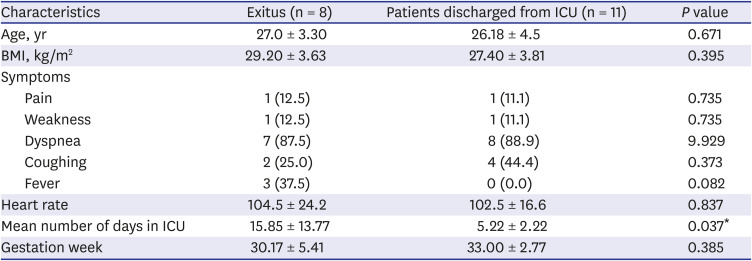
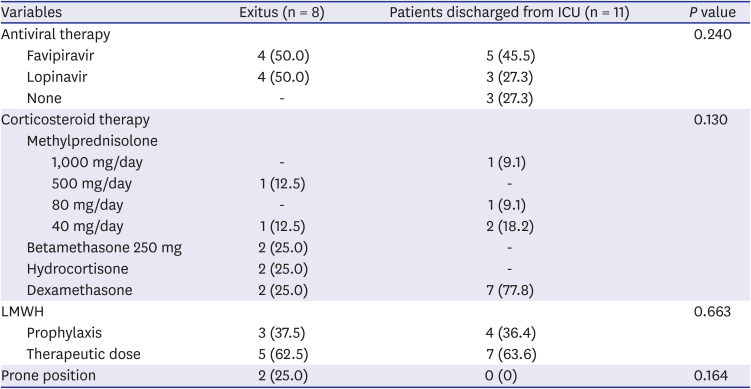
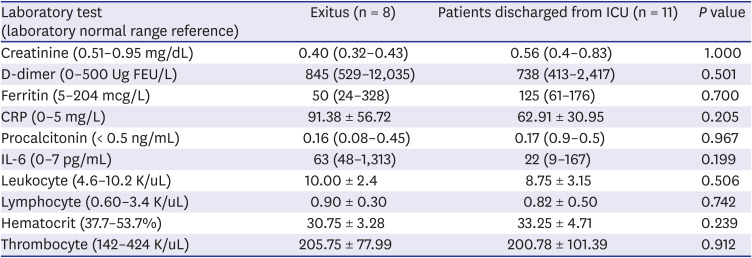

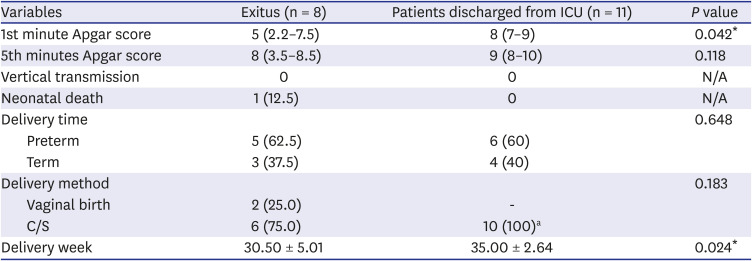




 PDF
PDF Citation
Citation Print
Print



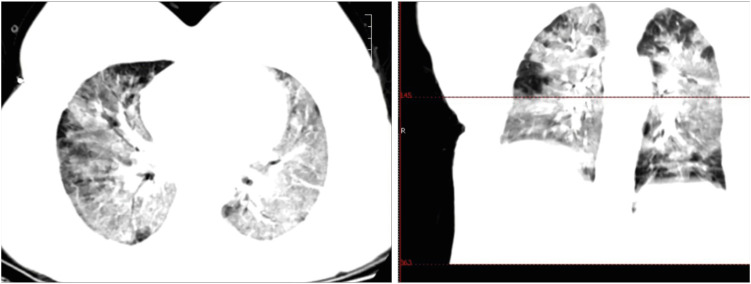
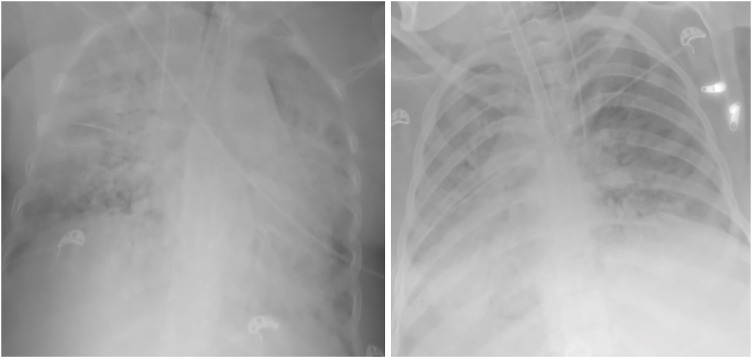
 XML Download
XML Download